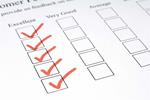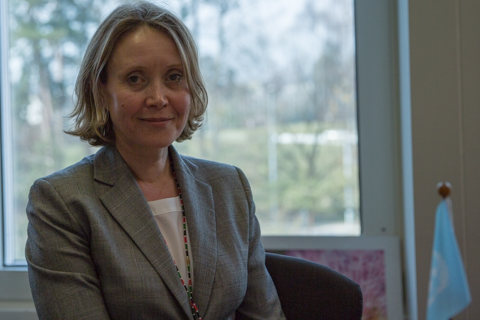-USAID.jpg) |
Visit the one-stop shop for resources on the life-cycle management of DDT, within the context of the chemicals and waste conventions and pulling together information from WHO, FAO and others.
New DDT Toolkit on sound management now available
|
 |
Aiming to strengthen national institutions and to promote the mainstreaming of sound management of chemicals and wastes, the 1st Call for Proposals is open until 4 July 2016.
Special Programme on Chemicals and Waste: Call for Proposals Open
|
 |
Green Customs Initiative: the BRS Secretariat hosts the 11th meeting of the GCI Partners in Geneva, 14-15 April 2016.
Preventing illegal trade in environmentally - sensitive commodities
|
 |
Our latest interview is with Professor Dr. Jinhui Li, Executive Director of the Basel and Stockholm Conventions Regional Centre, Beijing China.
Focus on China and the Pacific
|
 |
The Stockholm Convention Effectiveness Evaluation is well on track to assess global progress on ridding the world of POPs.
Report on 1st Meeting of Effectiveness Evaluation Committee now available
|
 |
The Secretariat invites Parties to submit information for the evaluation and review of BDEs pursuant to paragraph 2 of parts IV and V of Annex A to the Stockholm Convention.
Call for information on brominated diphenyl ethers (BDEs)
|
 |
Short-term consultants are sought for key Stockholm Convention assignments, deadline for applications 30 March.
New consultancy opportunities at BRS
|
 |
The number of Parties to the Convention rises to 180, with Iraq’s accession, which enters into force for this new Party on 6 June 2016.
Iraq accedes to the Stockholm Convention
Iraq has acceded to the Stockholm Convention, depositing its instrument of accession with the Secretary-General of the United Nations on 8 March 2016. The Convention will enter into force for Iraq on 6 June 2016, and this action increases the total number of Parties to 180. More information is available from the Status of Ratifications page.
|
 |
A letter will be sent to NFPs reiterating the COP-7 request for the submission of outstanding third national reports.
First Effectiveness Evaluation Committee meeting reiterates request for 3rd National Reports
The first meeting of the EE Committee (February 16-18) requested its Chair and Vice-chair to send a letter to all national focal points of the Convention to reiterate the COP-7 request for the submission of outstanding third national reports, a key information basis for the successful completion of the Committee’s work.
Reports submitted by April 30th can still be taken into account in the Committee’s review of the effectiveness of the Convention. The Committee had a successful first meeting, reviewing a preliminary assessment document prepared by the secretariat, and noting the critical importance of additional sources of data before drawing conclusions and making recommendations on whether the Convention is achieving its objective. The Committee also charted a path forward to its next meeting in October 2016 and COP-8. The report will be available on the website shortly.
|
 |
Join the ever-growing number of @brsmeas followers and keep up to date on the chemicals and wastes agenda.
Follow BRS on Twitter for the latest news
|
 |
BRS Deputy Executive Secretary, Kerstin Stendahl, outlines lessons learnt from 10 years of working on synergies.
18th February is the 4th Anniversary of the - joint - BRS Secretariat
|
 |
New film shows how science underpins decision-making for the 3 BRS conventions.
Watch the latest BRS science video
|
 |
Yemen has transmitted its national implementation plan, pursuant to Article 7 of the Convention.
|
 |
Addressing amendments from COP4 and COP5, Cambodia has submitted its updated NIP.
Cambodia submits updated NIP
|
 |
The President of the COP invites Parties to share their views on outstanding issues, by 15 April 2016.
Deadline looming for call for views on compliance
|
 |
The Executive Board of the UNEP Special Programme holds its first meeting on 2 to 3 February 2016 in Geneva, Switzerland.
Institutional strengthening for implementation of the BRS Conventions
|
 |
Seychelles has submitted its National Implementation Plan, addressing amendments from COP 4, COP 5, and COP 6.
Seychelles submits its updated NIP
|
 |
The Secretariat hands over the signed BRS Geneva Gender Parity Pledge to Mr. Michael Moller, UNOG Director General.
Geneva Gender Parity Pledge
|
 |
The meeting report of COP-7 is now available in languages.
|
 |
Latest in the series highlights an inspirational artist leading an initiative to kick out waste and protect lives in Panama.
Gender Heroes 5: Children and art combine to reduce waste in Panama
|